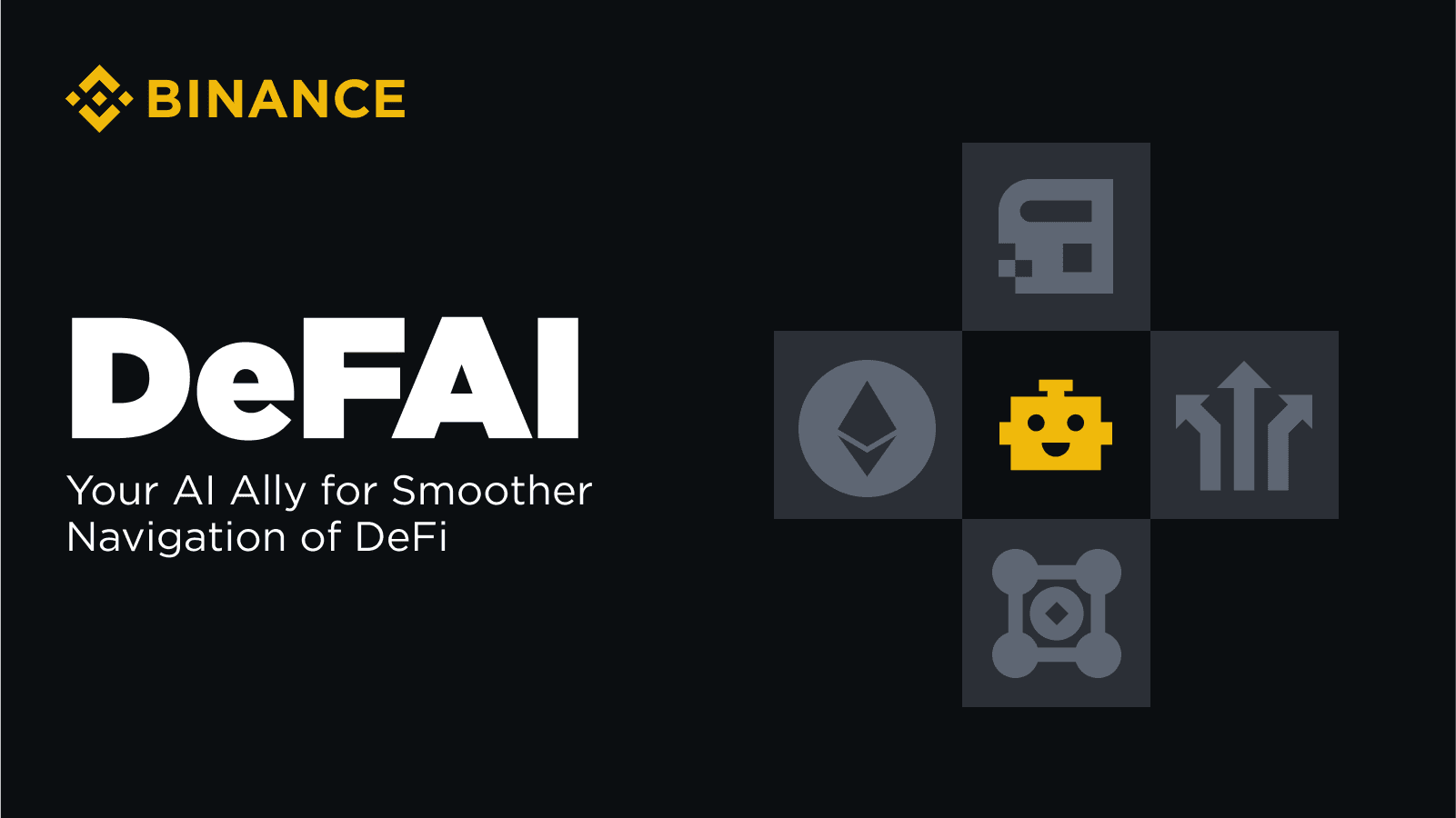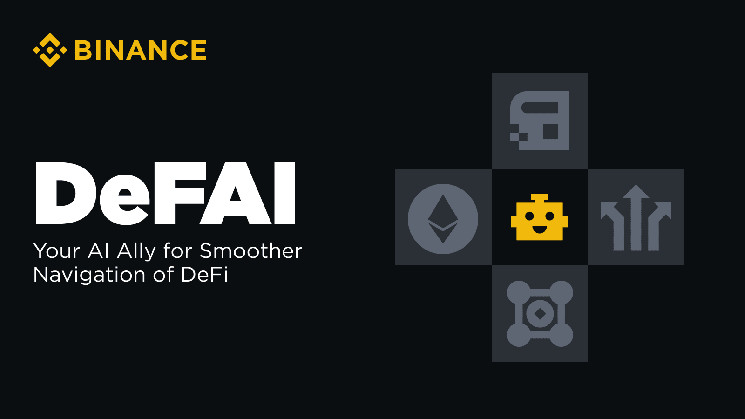Main Takeaways

Jumping into decentralized finance (DeFi) can feel like diving into the deep end without a life vest. If you’ve ever stared blankly at terms like staking, slippage, or gas fees, wondering how to even begin, you’re not alone. The unfamiliar jargon, intricate mechanics, and seemingly endless steps needed to execute transactions can make even the most tech-savvy newcomer’s head spin.
While decentralized finance holds incredible potential, its inherent complexity often creates a steep learning curve. That’s where DeFAI — the powerful fusion of DeFi and AI — steps in. By simplifying on-chain interactions, DeFAI promises to lower these barriers, making DeFi more accessible to everyone. In this blog, we’ll uncover what exactly makes DeFi so challenging, and how DeFAI swoops in to save the day.
Difficulties of DeFi
A Jungle of Jargon and Technicalities
The challenge starts with the sheer amount of jargon and highly technical concepts you’ll need to grasp. Terms like slippage, gas fees, and bridging are just the tip of the iceberg. To navigate DeFi effectively, it’s not enough to simply recognize these terms – you need a thorough understanding of complex terms such as liquidity pools, yield farming, automated market makers, tokenomics, and much more.
These aren’t just buzzwords; they represent the building blocks of the DeFi ecosystem. For newcomers, grasping how liquidity pools facilitate trading or how yield farming generates rewards can feel like tackling an advanced finance course. Without this foundational knowledge, engaging with DeFi becomes a daunting task, making the barrier to entry high even for those eager to explore its potential.
Let’s put this into perspective. Say you’ve just deposited $1,000 into a crypto exchange like Binance, ready to put that money to work on a DeFi platform like AAVE. It sounds straightforward enough, but here’s where it gets tricky: first, you’ll need to buy a stablecoin like USDC. Next, you’ll have to bridge it to the correct blockchain network (in this case Arbitrum), cover the gas fees for each transaction, and then finally deposit your funds into AAVE.
That’s not just one or two steps – it’s a sequence of interconnected actions, each demanding a solid grasp of DeFi mechanics. From understanding how to choose the right bridge to leaving sufficient native tokens in your wallet to pay gas fees, the entire process requires both technical knowledge and careful attention to detail.
Even seasoned users can find this level of complexity frustrating, so it’s no surprise that newcomers often feel overwhelmed. Hence, DeFi’s steep learning curve poses a significant barrier for the average user – and consequently, broader adoption.
Vulnerability to Scams and Exploits
While the absence of centralized authority is one of the biggest strengths of DeFi, it also comes with a significant drawback: there’s no customer support hotline or oversight agency to handle queries or assist when things go wrong. This leaves users to fend for themselves, creating opportunities for malicious actors to exploit gaps in knowledge and experience.
Consider this scenario: your transaction fails because of insufficient gas fees. Unsure of what went wrong, you turn to an online forum for help. A scammer possibly posing as a helpful support agent might direct you to a “blockchain rectification” website or manipulate you into revealing sensitive information like your seed phrase. Before you know it, your funds have vanished.
This lack of safety nets means that even small, seemingly simple mistakes can lead to catastrophic consequences. Without clear guidance, navigating DeFi becomes not just intimidating but potentially dangerous, deterring many from engaging with the ecosystem.
How DeFAI Defies Complexity
Among the various advancements driven by AI in DeFi, abstraction AI stands out as an efficient tool for simplifying user interactions with the decentralized financial ecosystem.
Abstraction in AI works by simplifying complexity, focusing on essential features while hiding unnecessary details. In the context of crypto, this means concealing complex operations like bridging and staking behind seamless, intuitive interfaces. By handling these processes in the background, AI removes the need for extensive prior knowledge, enhancing the DeFi experience for both newcomers and seasoned traders.
Simplifying Complex Processes
A core purpose of AI is to introduce efficiency, solve intricate problems, and simplify otherwise daunting tasks. In DeFi, abstraction-based AI takes on the heavy lifting by automating multi-step trading and staking operations – processes that would otherwise require users to understand technical details like bridging. For instance, AI tools like Griffain, an abstraction AI platform built on Solana, enable users to execute trades, mint NFTs, manage wallets, and even snipe tokens based on predefined conditions – all through simple natural language commands.
Similarly, Anon, another powerful abstraction AI, takes DeFi interactions even further by enabling users to execute trades using natural language, including support for international languages like Chinese, Spanish and Finnish. Anon also facilitates seamless cross-chain bridging powered by LayerZero and offers time-gas-price-based automation and triggers, making it even easier for users to navigate complex DeFi operations with minimal effort.
Minimizing Human Error
Abstraction-based AI doesn’t just simplify processes; it also enhances security by minimizing human errors. One of the most common pitfalls in DeFi is the risk of sending funds to incorrect wallet addresses, whether due to typos or clipper malware that replace clipboard data with malicious addresses.
DeFAI can significantly reduce these risks by automating address validation, ensuring that transactions are sent to the correct, intended destination every time. By handling the technical aspects in the background, DeFAI significantly reduces the chances of human oversight, allowing users to focus on the strategic elements of their DeFi interactions without worrying about technical mistakes.
Smarter Decision-Making with Real-Time Insights
Beyond simplification and security, abstraction AI may even enable users to make smarter decisions through real-time data analysis. Solutions like Anon aggregate data from multiple platforms, offering insights into market trends, token performance, and social sentiment. Anon’s agent, Gemma, consolidates both on-chain metrics (like total value locked and volume) and off-chain data (such as X and Telegram sentiment) to provide tailored insights and alerts, helping users make informed decisions without manually tracking multiple sources.
Final Thoughts
As DeFi continues to grow, the complexity that once made it challenging for many is gradually being addressed by innovations like DeFAI. By simplifying intricate processes, reducing human error, and enabling smarter decision-making, abstraction AI is making decentralized finance more accessible and secure for both newcomers and experienced users.
The ability to navigate complex DeFi systems without needing deep technical expertise is a significant advancement, offering more opportunities for a wider range of participants. Looking ahead, we can expect further developments in AI-driven solutions, making DeFi even more intuitive and safer for users, paving the way for an increasingly user-friendly and efficient DeFi ecosystem.
Further Reading
-
Binance Research: Exploring the Future of AI Agents in Crypto
-
The Long Game of Crypto: Mastering Risk Management and Security
-
Science Behind Crypto Misconceptions: Status Quo Bias & Endowment Effect
Disclaimer: Digital asset prices are subject to high market risk and price volatility. The value of your investment may go down or up, and you may not get back the amount invested. You are solely responsible for your investment decisions and Binance is not liable for any losses you may incur. Past performance is not a reliable predictor of future performance. The products or projects mentioned here are for informational purposes only, and Binance does not endorse or recommend them. You should only invest in products you are familiar with and where you understand the risks. You should carefully consider your investment experience, financial situation, investment objectives, risk tolerance, and consult an independent financial adviser prior to making any investment. This material should not be construed as financial advice. For more information, see our Terms of Use and Risk Warning


